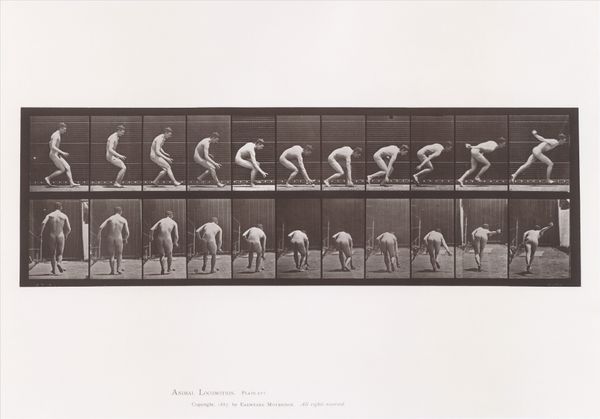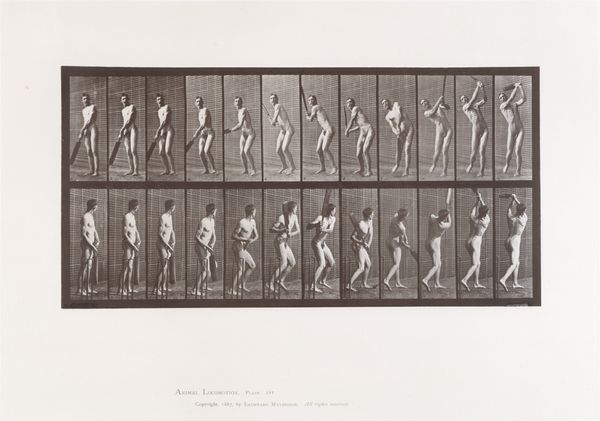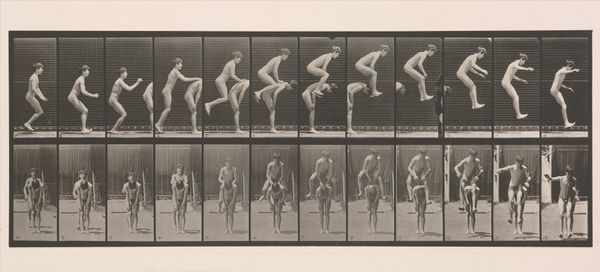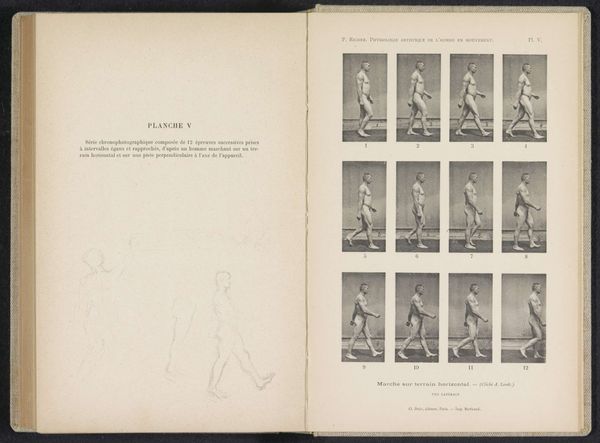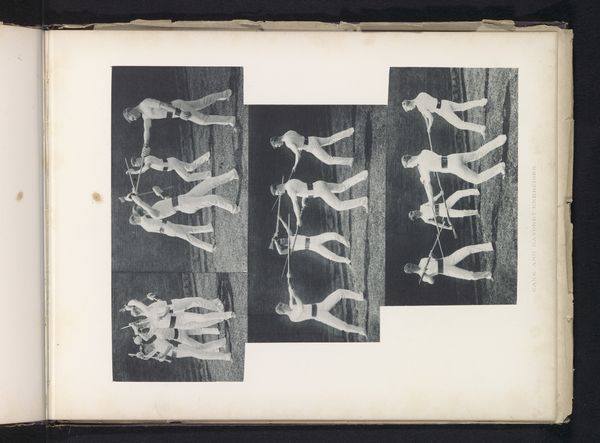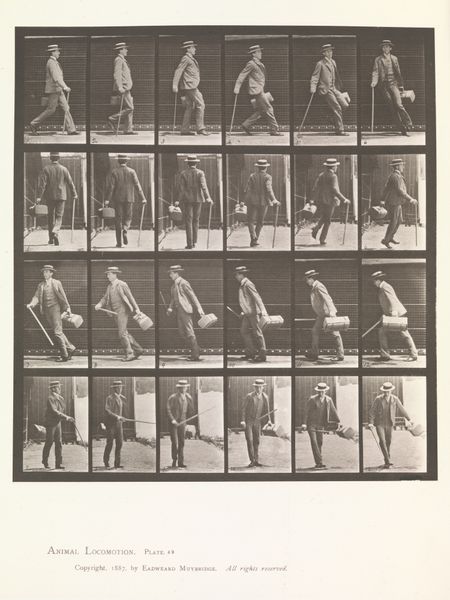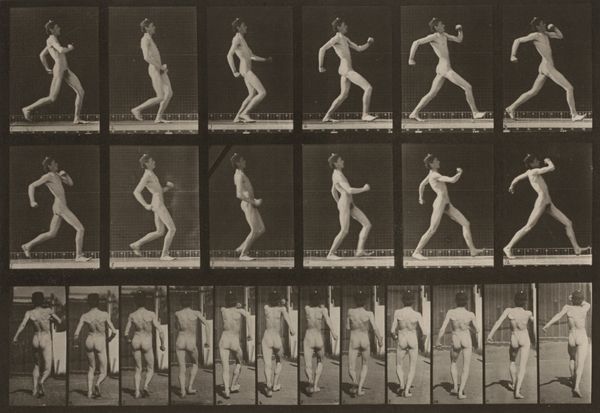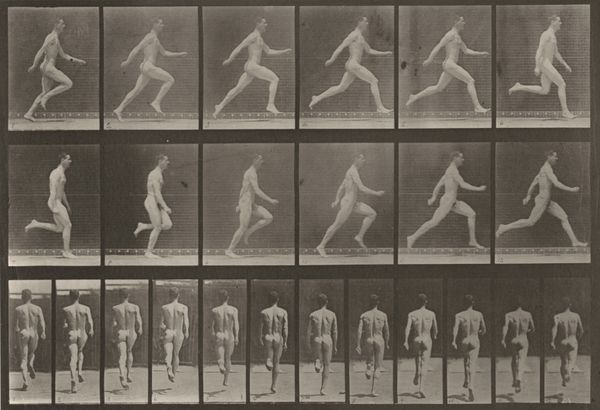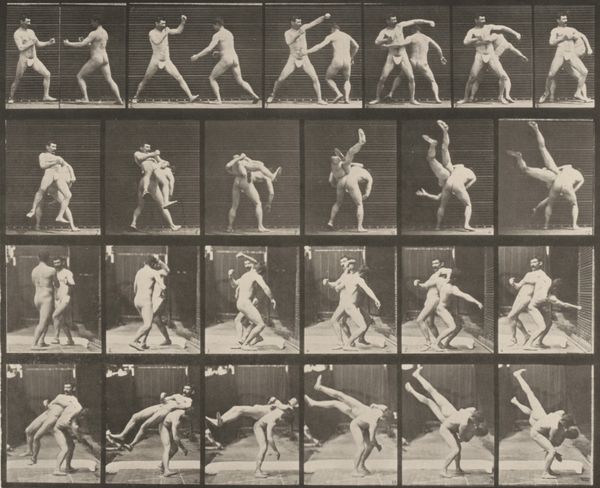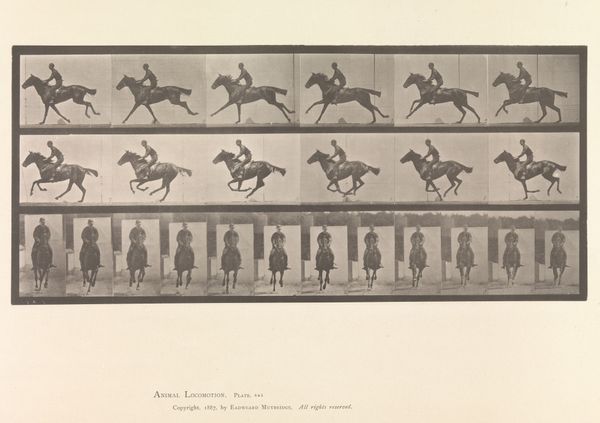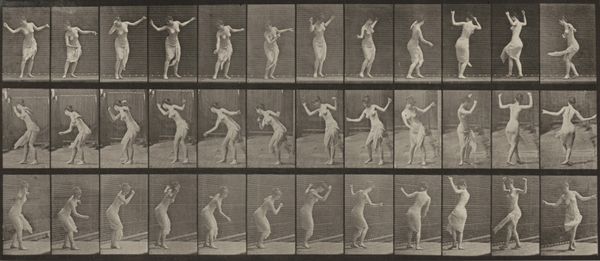
Animal Locomotion. An Electro-Photographic Investigation of Consecutive Phases of Animal Movements. Commenced 1872 - Completed 1885. Volume V, Man (Pelvis Cloth) 1880s
0:00
0:00
#
pencil drawn
#
amateur sketch
#
shape in negative space
#
light pencil work
#
book
#
pencil sketch
#
light coloured
#
charcoal drawing
#
pencil drawing
#
men
#
tonal art
#
graphite
Copyright: Public Domain
Eadweard Muybridge created this photographic study entitled "Animal Locomotion" between 1872 and 1885. The composition is structured as a grid, freezing moments of movement, with a figure vaulting over a pole. The monochrome tonality gives a sense of scientific detachment, encouraging a close analysis of form. Muybridge’s work fractures the continuous flow of motion into discrete, analyzable units. This dissection of movement mirrors the analytical spirit of the late 19th century, influenced by thinkers like Ernst Mach, who sought to understand the world by breaking it down into elementary sensations. The grid structure not only presents a sequence but also invites a comparative study of each pose, underscoring photography’s novel capacity to capture and categorize aspects of human movement. The seeming objectivity of Muybridge’s photographic method challenges traditional artistic representations of the body. It questions the role of the artist’s interpretation, replacing it with a supposedly unbiased mechanical gaze. This shift highlights the emerging tension between art and science, as new technologies began to redefine how we perceive and represent the world around us.
Comments
No comments
Be the first to comment and join the conversation on the ultimate creative platform.
